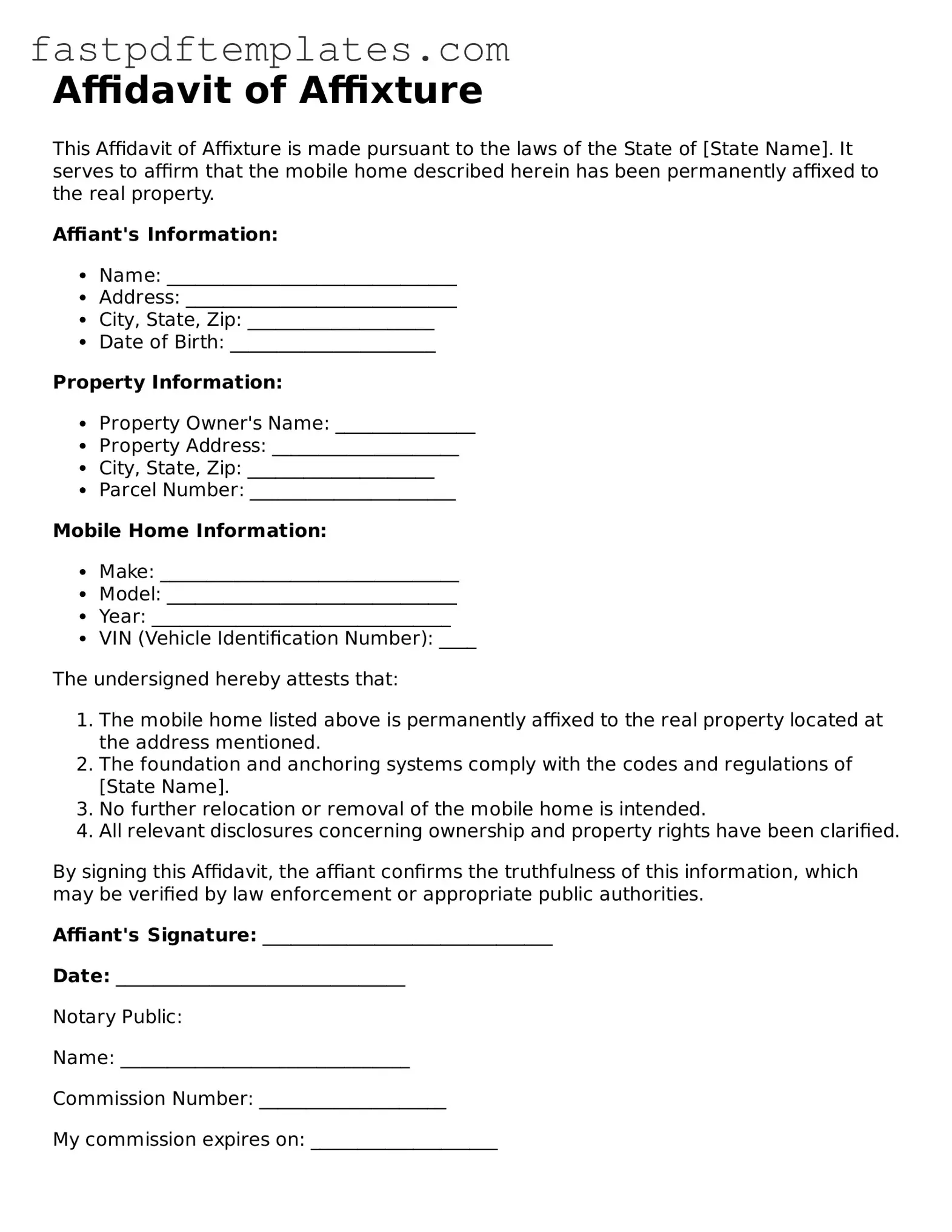The Affidavit of Affixture is similar to the Certificate of Title, which is used to establish ownership of a vehicle or property. Both documents serve as proof of ownership and provide a legal basis for the rights of the owner. The Certificate of Title includes details such as the owner's name, the description of the property, and any liens against it, much like the Affidavit of Affixture outlines the ownership and status of a manufactured home once it is permanently affixed to real estate.
Another related document is the Bill of Sale. This document acts as a receipt for the transfer of ownership of personal property. Similar to the Affidavit of Affixture, a Bill of Sale contains essential information about the parties involved, a description of the property, and the terms of the sale. Both documents aim to provide a clear record of ownership transfer, ensuring that the rights of the new owner are recognized.
The Deed is also comparable to the Affidavit of Affixture. A Deed is a legal document that transfers ownership of real property from one party to another. It includes details about the property and the parties involved. Like the Affidavit of Affixture, a Deed serves to establish legal ownership and can be recorded with the county to provide public notice of the ownership change.
The Mortgage Agreement shares similarities with the Affidavit of Affixture as both involve real property. A Mortgage Agreement outlines the terms under which a borrower receives funds to purchase real estate, using the property as collateral. Both documents are critical in establishing legal claims and responsibilities regarding the property, ensuring that all parties understand their rights.
The Lease Agreement is another document that bears resemblance to the Affidavit of Affixture. A Lease Agreement outlines the terms under which a tenant may occupy a property owned by another party. Similar to the Affidavit, it contains specific details about the property and the parties involved. Both documents help clarify the rights and responsibilities of the parties, though they pertain to different situations regarding property use.
The Warranty Deed is akin to the Affidavit of Affixture in that it guarantees that the seller has clear title to the property and the right to sell it. This document provides assurance to the buyer that there are no undisclosed claims against the property. Both documents play a vital role in the real estate transaction process, ensuring that ownership is legally established and protected.
The Quitclaim Deed is another similar document. This type of deed transfers whatever interest the grantor has in the property without making any guarantees about the title. While the Affidavit of Affixture confirms ownership and affixation of a manufactured home, the Quitclaim Deed serves to transfer any interest in the property, making both documents important in property transactions.
The Property Tax Assessment Notice is relevant as it provides information about the assessed value of a property for tax purposes. While it does not directly establish ownership, it is linked to the Affidavit of Affixture because it reflects the status of the property for taxation. Both documents are essential for understanding the financial obligations tied to property ownership.
Lastly, the Homeowners Association (HOA) Agreement is similar in that it outlines rules and responsibilities for property owners within a community. While the Affidavit of Affixture deals specifically with manufactured homes, both documents establish expectations and regulations that owners must follow, fostering a sense of community and order.
